
Browse our fun-packed, helpful plant-based articles, and delve deeper into this healthy, sustainable lifestyle!


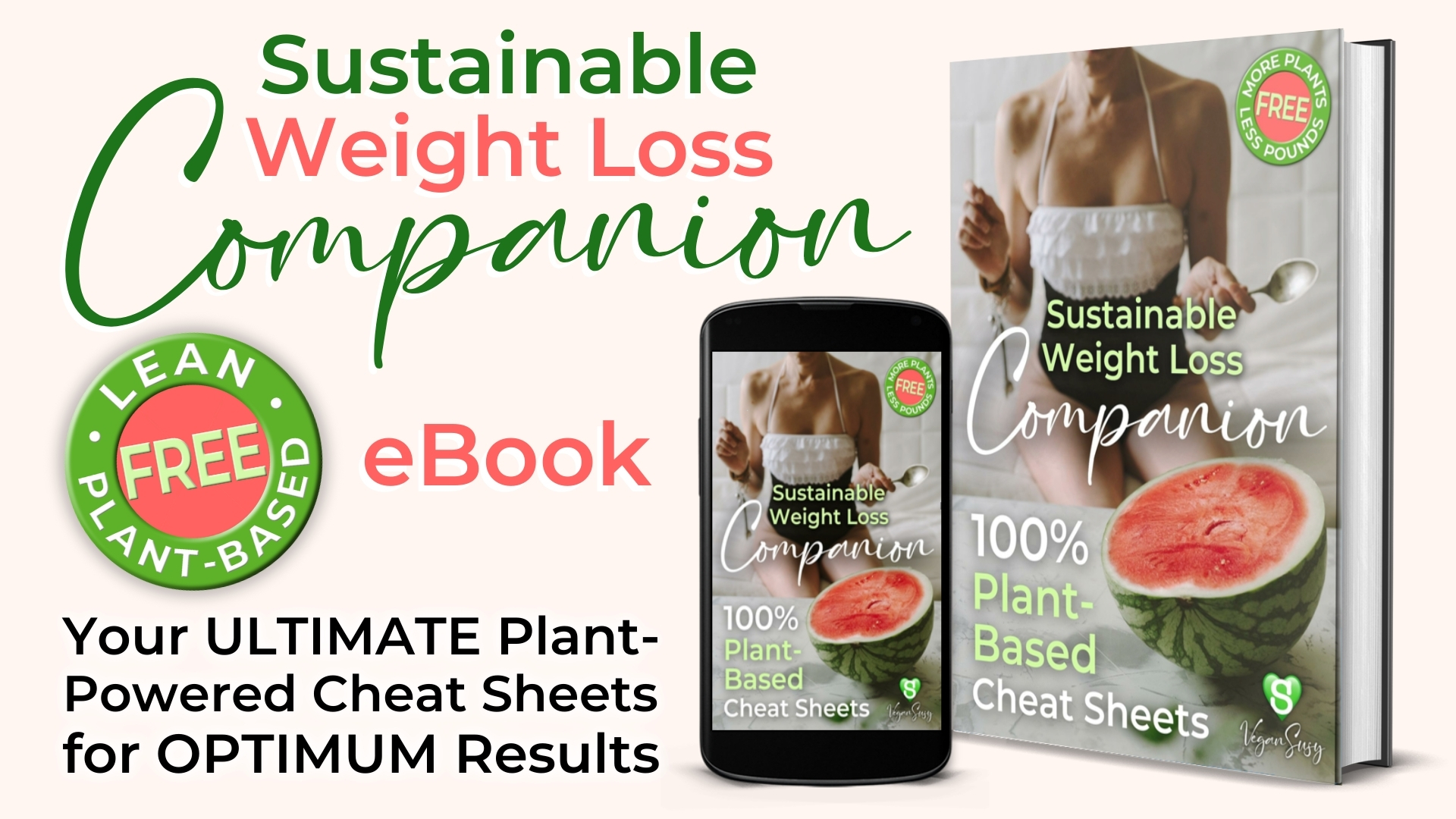
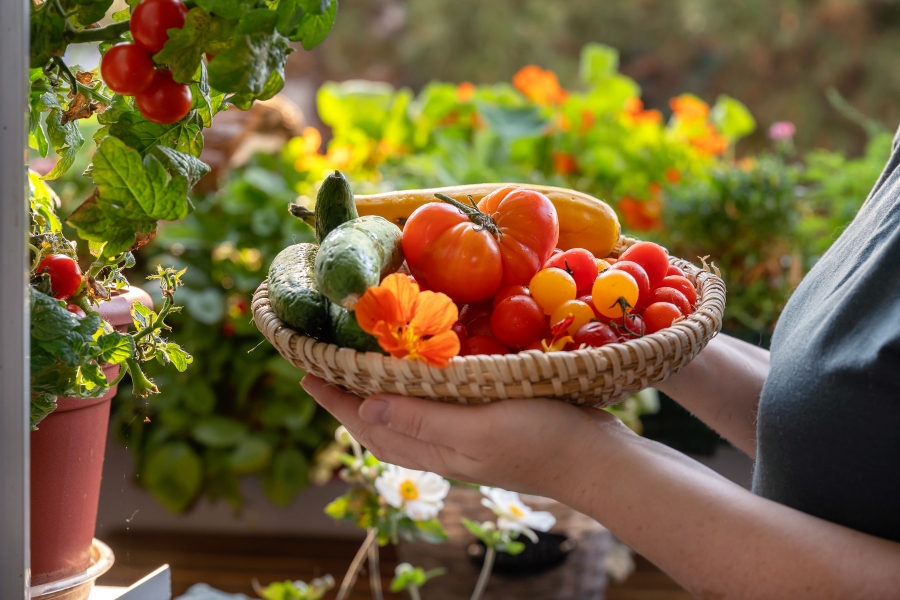
Grow Fresh Vegan Food on Your Balcony: 7 Easy Container Garden Ideas
Plant-Based Lifestyle Tips For Women
Author: Plant-Based Susy
There are many clever ways to grow your own vegetables and herbs in small spaces
There is something magical about being able to grow your own vegan food, and you don't need a farm or a giant backyard to do it.
Container gardening for plant-based meals can be done on a well-lit balcony, deck, patio, windowsill, or a well-positioned table indoors. Vegan gardening avoids animal manure and killing insects. Try to create containers out of existing items or buy ones made from eco-friendly materials.
There are many clever ways to grow your own vegetables and herbs in small spaces. Nor does sourcing containers for a balcony garden have to be expensive. We'll show you some creative ways to turn your balcony green and provide vegan gardening tips.
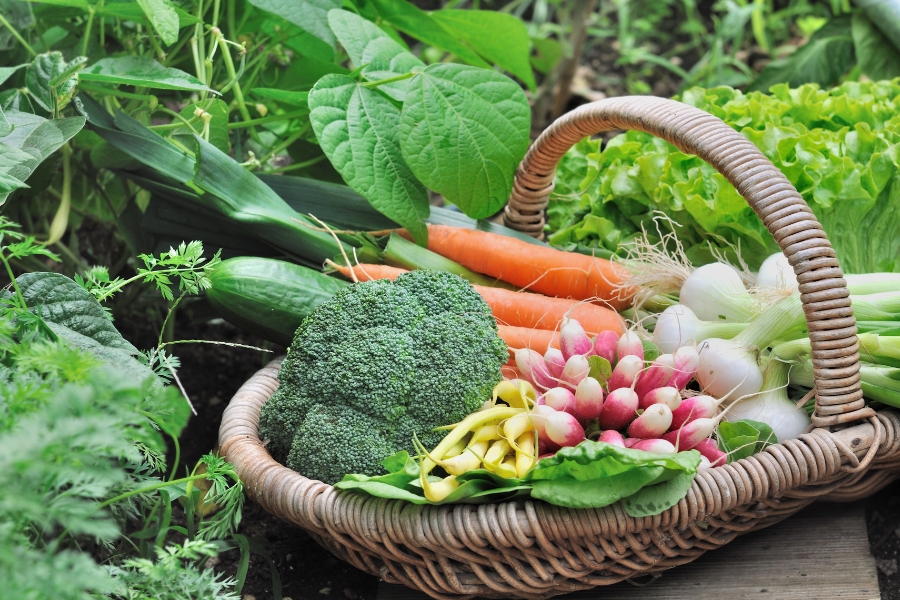
Table of Contents:
7 Space-Saving Container Garden Ideas for Vegans
We love our local organic vegetable farmers. But picking fresh herbs and vegetables right from the balcony adds something special to our recipes that is all kinds of delicious. You can make a space-saving container garden, too, and it doesn't have to be expensive.
From old shoeboxes to a discarded baby bathtub, there are many ways to transfer somebody else's "trash" and second-hand objects into planters for your vegan produce.
So, look around your home for items that can be repurposed. Also, keep an eye out for garage sales or your favourite online sites that advertise second-hand goods for sale.
With the proper sunlight and a little ingenuity, you’ll be popping fresh tomatoes into your mouth in no time.
Need some inspiration? Vegan Susy has 7 ideas to get you started:
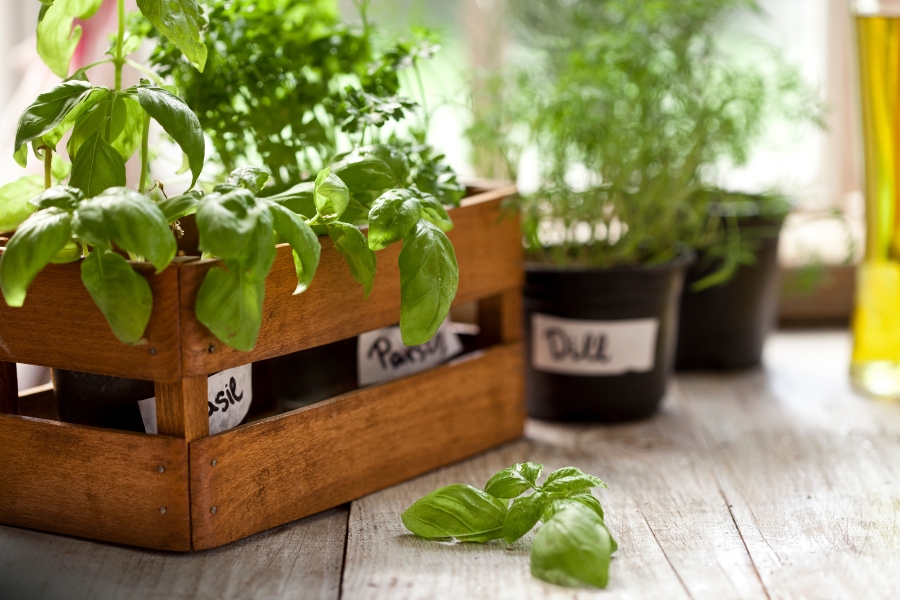
1. Hang a Shoe Organiser on the Balcony Wall for Herbs
Many of us have bought a shoe organiser only to discover the closet door won't shut with it open. Then there are those of us with footwear too large for the petite slots. But don't toss it. That shoe organiser can be transformed into a walled garden on your balcony, brimming with delicious herbs.
Tips for turning a shoe organizer into a vegan garden:
Ensure the hooks, nails, or rail you use to hang it can hold the total weight. Once you water the soil in the pockets, it will become much heavier than when holding just shoes.
Check drainage. If the material of your organiser isn't letting excess water leave, take a sharp object, like a nail, and poke some holes at the base of each pocket.
2. Create A Vegan Garden in a Child’s Paddling Pool
A modest size child’s paddling pool can create a veg bed on your balcony. To save space, place the pool on a circular table to create a raised vegetable bed. The underneath can be used for storage or plants that enjoy shade or semi-shade. Just ensure the table is strong enough.
When using a kiddie pool, consider the following:
Drill small holes in the side and bottom for drainage
Line the bottom with landscape fabric instead of gravel for lighter drainage. It also creates a barrier between plastic and soil.
For climbing vegetables and fruit, add fencing, screening, or bamboo poles latticed with string.

3. Grow Potatoes in Reusable Grocery Bags
Reusable grocery bags are wonderful, but it feels like you can't go anywhere without being handed another. There are only so many tote bags people need.
So, give some of your stash a new life by turning them into a home for potatoes, who prefer not to be grown in a standard container.
Steps to growing potatoes in a reusable grocery bag:
Select a small variety of potatoes to be your "seeds."
2 days before planting, cut some potatoes into 2-inch chunks.
On planting day, add 3 inches of soil to your reusable grocery bag.
Place cut potatoes into the bag, sprouting eye-side up.
Add 4 inches of soil.
When your plants reach around 8 inches high, add another 4 inches of soil.
Keep up the cycle until the bag is full.
Water your potatoes regularly until the plant part begins to wilt.
Cease watering once wilt begins.
Wait for plants to die (about 2 weeks).
To harvest, dump the bag out and sift. Think of it as a vegan-friendly Easter egg hunt.
Enjoy your crop.
4. Use Old Dresser Drawers as Containers to Grow Veggies
Old dresser drawers make attractive containers for your vegetables. They can be arranged along a balcony like flower boxes or like stadium steps to save space.
Some people keep the drawers in the dresser, opening the bottom one out the furthest, skipping the middle, and pulling the top drawers only part way. The top of the dresser can be used as a work surface or as a place to arrange more garden containers.
Another popular way to stadium step drawers is by repurposing a stepping stool or ladder. If using this method, you might need to nail or screw the drawers into place to prevent them toppling when your cat (or your neighbour’s) comes by to inspect your garden’s progress.
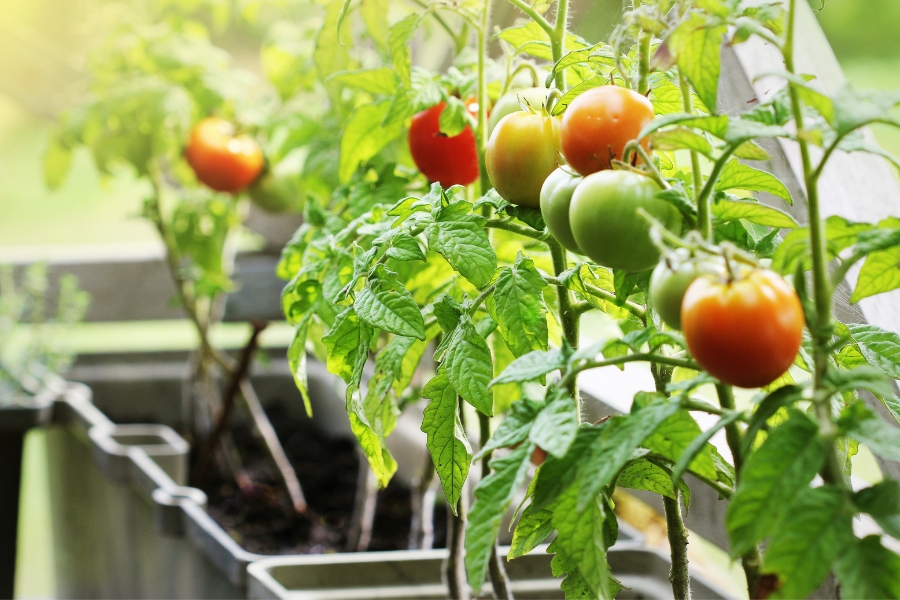
5. Create a Hanging Bamboo Vertical Garden on Your Balcony
Long, thick tubes of bamboo or PVC pies are a space-saving way to create a vertical garden on your balcony.
Each garden row is created by taking your length of bamboo and cutting holes into one side for each seedling. On the other side, drill tiny holes for drainage.
The poles can be mounted on the wall by brackets or drill holes down the far right and left sides and run a chain or rope through to hang them.
Be aware these are shallow containers, so pick plants that don't need to send out deep roots:
Mint
Radishes
Green onions
Chives
Strawberries
Mustard greens
Thyme
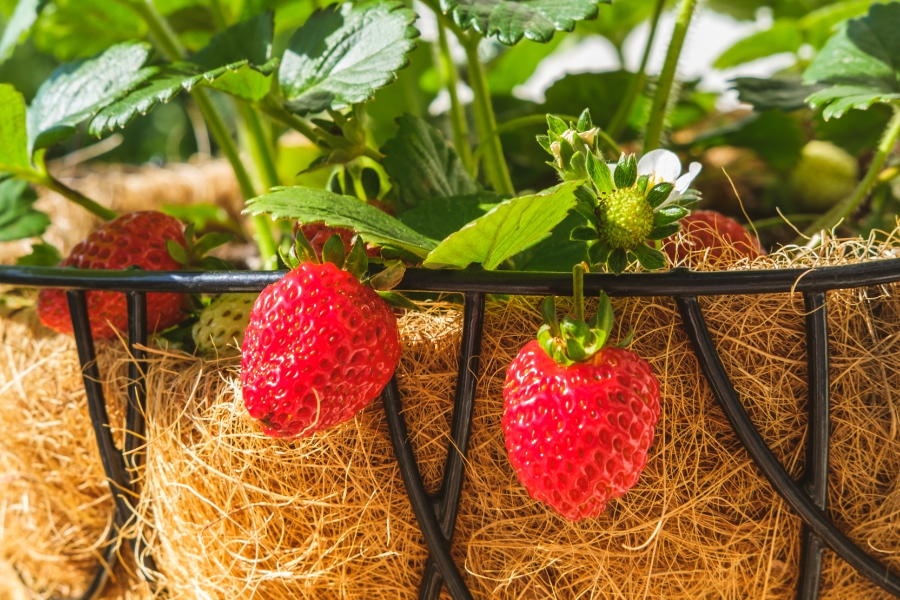
6. Hanging Baskets Save Space on Balcony Gardens
Hanging baskets are excellent space-saving solutions for balcony gardens. They are not much different than using plant pots, aside from some people needing a stool for watering. They'll require a well-lit area and ensure any hooks or beams you use can bear the weight.
Nor are hanging baskets solely for herbs or leafy greens. Other fruits and vegetables that have done well in hanging baskets include:
Strawberries
Dwarf cucumbers
Small tomato varieties, like Tumbling Tom and Cherry
Peas
Chilli peppers
Small sweet pepper varieties, like trailing Sweet Sunshine
Dwarf eggplant
Sweet potatoes
Dwarf beans
7. Stackable Planters to Save Space on Your Balcony
Stackable planters are more challenging to source second-hand or make yourself (but not impossible) than some of our other suggestions. But if you are willing to buy some supplies, these are an excellent way to make the most of your balcony space.
Stackable planters are suitable for planting:
Leafy greens
Herbs
Strawberries
Edible flowers
Radishes
Spring onions
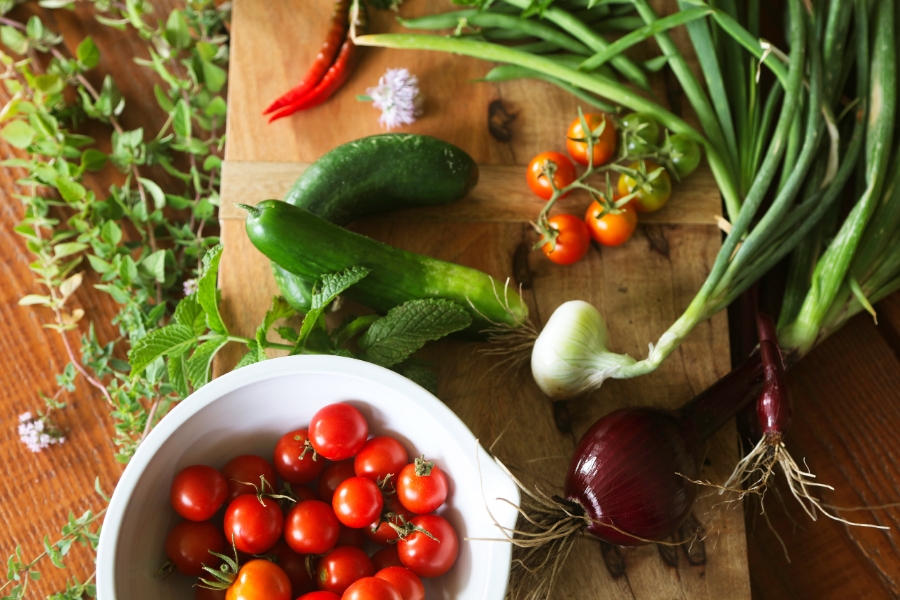
6 Tips on Container Gardening for Plant-Based Meals
Container gardening for plant-based meals differs slightly from growing vegetables in the ground. Also, vegan ethos means steering clear of products that your average green thumb adores.
We’ve put together 6 tips to help you get your vegan-friendly balcony garden started on the right leaf.
1. You Don't Need Plastic Trays for Seedlings
You don't need plastic trays to grow seedlings for your containers.
If you use toilet paper, save the cardboard rolls, as they make excellent cosy homes for seeds. There are also seed pots made from bamboo, rice hulls, coir, and plant fibre.
Bonus: Growing seeds in a biodegradable pot often allows you to plant them directly into their new container without popping them out, risking damage to their roots or sending them into shock.
The pots are soft enough to allow the seedlings' roots to pass through, and the pot breaks down as the plant expands.
2. Weight Matters When Growing Food on Your Balcony
Keep track of how much your containers weigh when growing food on your balcony. It isn’t just the vessel’s heft to consider; there is also the soil and water. It adds up quickly.
Consequently, while repurposing a shallow kiddie pool might work great on your balcony, reusing a gorgeous, deep, porcelain bathtub will not. The latter is a better option for those looking for adorable ways to create raised beds in their yard.
Heavy terracotta or concrete planters should be kept on the small side and used sparingly. Making a planter box out of an old pine dresser drawer is much lighter than using one of the same size made from mahogany or walnut.
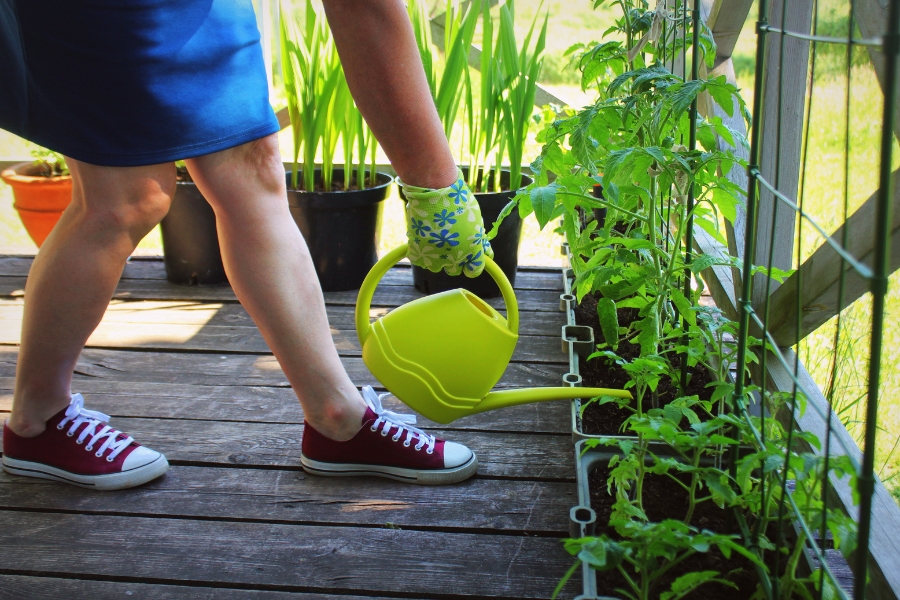
3. Use Vegan Potting Soil, Compost, and Fertiliser
Many potting soils, composts, and fertilisers contain animal products. Vegan varieties exist, but you’ll need to research carefully and read the labels.
If you have the space, some vegans make their own. There are many recipes, but be aware that you often have to obtain the ingredients in bulk. Thus, if you live in a compact apartment, you may find buying from a trusted vegan source easier.
4. Use Companion Gardening and Natural Pest Control
Vegan gardening is about sharing the world with other living things. But too much sharing with pests leaves little for your own plate.
We’re not recommending you use poison or kill any tiny critters. But companion gardening and other natural pest control will help leave some vegetables for you.
Companion gardening is done by planting different species together. So, instead of filling a container solely with tomatoes, add some marigolds and basil.
WARNING: not all plants play well together in the same container. Check The Old Farmer’s Almanac’s guide to see who gets along with whom.
You can also deter pests by spraying natural solutions, such as a 50/50 of water and apple cider vinegar. Do not make the vinegar solution any more potent, or you risk hurting or killing certain critters.
Less risky is creating a cayenne pepper spray. It will irritate tiny visitors but won’t hurt them. Mix 2 tablespoons of powdered cayenne per gallon of water to make the solution. Alternatively, use red pepper flakes. Then spray it around, taking care not to get any spray back on your face.
Lastly, add some lavender, citronella, and mint around your balcony, as these attract pollinators while putting off some other, more leaf-loving, insects.

5. Select Container Friendly Fruit, Vegetables and Herbs
Try to select container-friendly varieties of fruit, vegetables, and herbs. Not all plants enjoy the cozy, snug environment and demand space.
Also, look for dwarf or miniature varieties. For example, cherry tomatoes do brilliantly in a balcony garden, but their cousins, like Brandywines, are much more challenging and require significantly more space. Regular cucumbers are difficult to grow in containers, but dwarf varieties flourish.
Other popular choices for container gardening include:
Leafy greens like lettuce, chard, Asian greens, and spinach
Peas
Dwarf beans
Cucamelons – The Cutest Superfood You Can Grow Yourself
Strawberries
Radish varieties
Sweet peppers
Chillies
Herbs like basil, mint, thyme, and oregano
Green onions
Sweet potatoes
If you have space for larger containers, you can plant small varieties of the following:
Onions
Broccoli
Beetroot
Garlic
Plants that prefer to thrive in the good old-fashioned ground include:
Pumpkins
Winter squash
Fruit trees
Sweet corn
Carrots
Lastly, consider your local climate and season, and remember not all edible plants enjoy full sun. For example, parsley and chives are happier in shady areas.

6. Brighten up Your Garden Balcony With Edible Flowers
Edible flowers are a charming way to add colour and delight to your balcony garden. Plus, they add extra elegance to any meal or dessert.
Edible flowers that do well in containers or hanging baskets include:
Calendula
Chrysanthemums
French marigolds
Nasturtiums
Pansies
Violas
Frequently Asked Questions
Is using peat vegan?
Peat, the prevalent ingredient in seedling mixes and compost, is technically vegan. However, it is not a sustainable resource, taking a century to regenerate, and harvesting it releases substantial amounts of carbon dioxide. Coir, which comes from coconut husks, is considered an eco-friendly alternative.
Are plastic plant pots vegan?
Plastic is a tricky issue for vegans, as we're all trying to reduce plastic use, and some forms use a slipping agent derived from animal fat. Ideally, don't buy new plastic pots or containers, but recycle items you already have or find second-hand. If you are buying new, keep an eye out for eco-friendly containers.
Are there vegan gardening seeds?
Seeds are technically vegan as they are plants. However, those who want to live more mindfully on this planet try to take care of where they source their seeds, such as obtaining them from fellow vegan gardeners or buying organic and heirloom varieties.
Can I grow vegetables indoors without a balcony?
Yes! A sunny windowsill, tabletop, or vertical planter with grow lights can support herbs, greens, and small veggies.
What are the best vegetables for small-space container gardening?
Herbs, leafy greens, tomatoes, radishes, peppers, and strawberries thrive in compact spaces like hanging baskets and stackable planters.
Conclusion:
Growing fresh vegan food on your balcony is a rewarding and tasty experience, and you don't have to spend a lot to find space-saving containers.
To reach success, select plants that are happy in cosy containers and suit your climate. Remember to check that any products you use are vegan-friendly, especially fertilisers. Bon appetite.
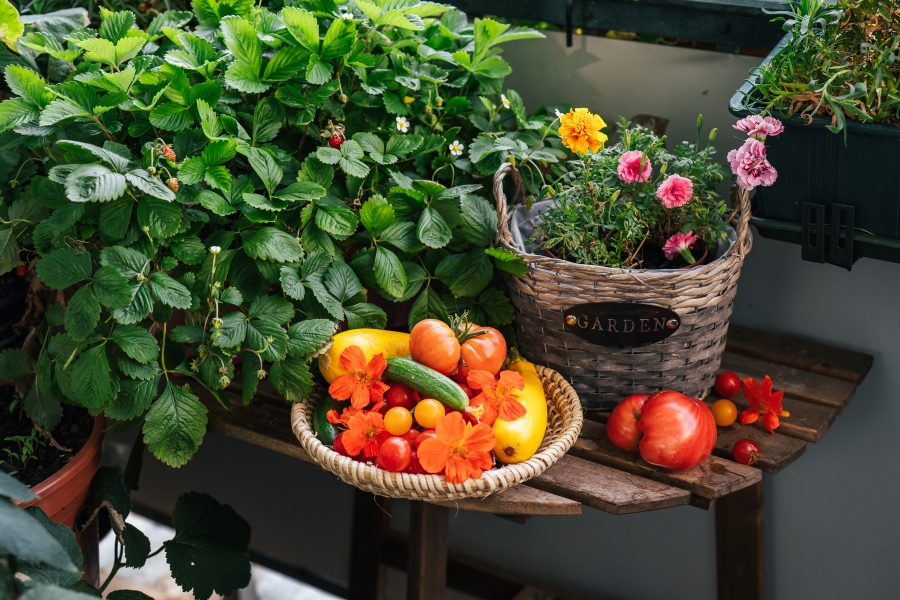
💚 "Happy Plant-Based Eating & Exercising!" 💚

Plant-Based Susy
Plant-Based Nutrition Professional & Weight Loss Coach
Empower Yourself: Embark on a Delicious Fat Loss Adventure


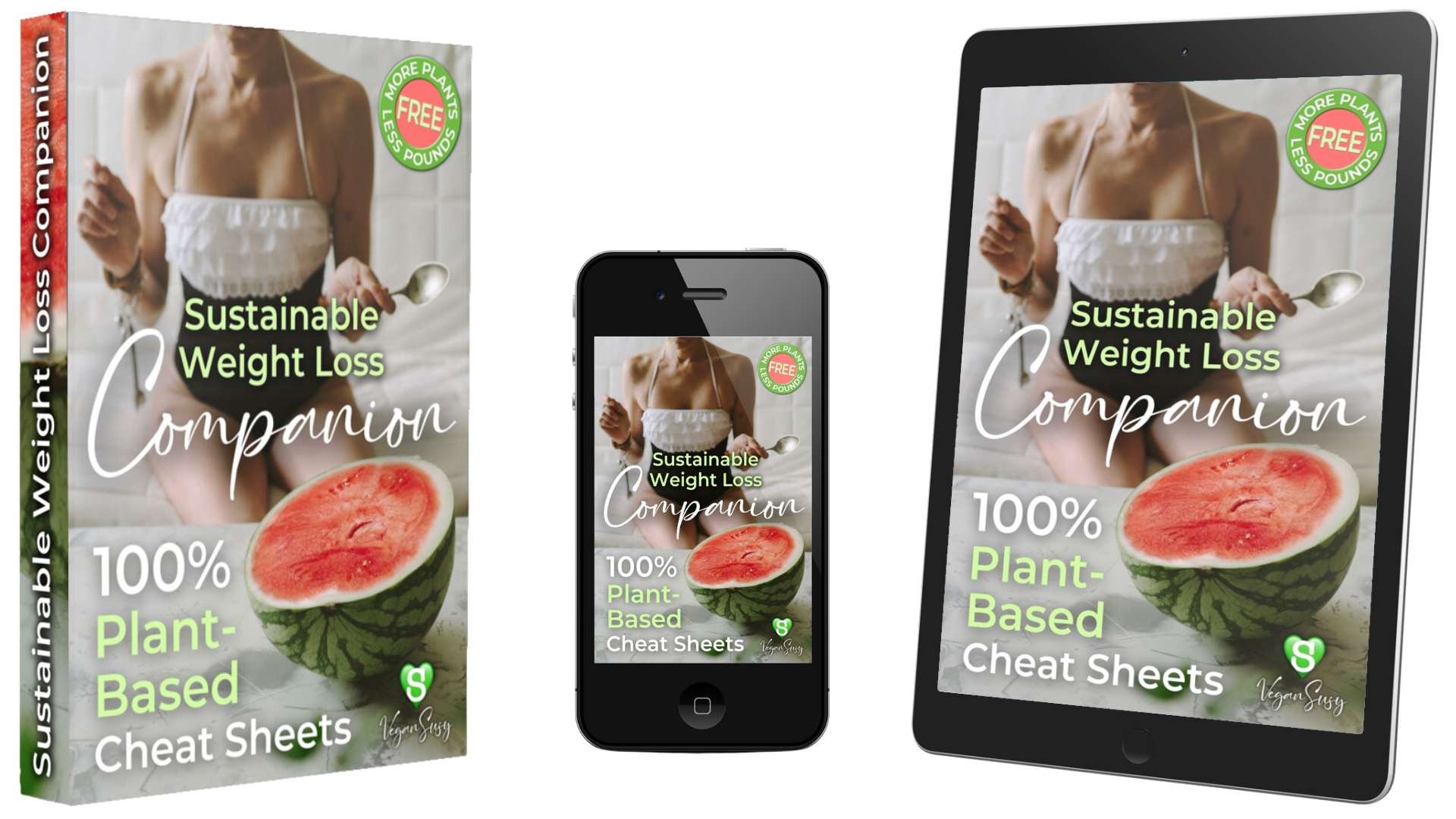
🍉 Get Ready to Jump Start Your Fitness Goals AND DISCOVER A HEALTHIER YOU!
🍉 Let's Make Your Fat Loss & Optimum Health Journey a Delicious Success Story!
🍉 Get The FREE Sustainable Weight Loss Companion eBook and CHEAT SHEETS!
More Free Resources
Unlock Your Transformation Today!
© 2025 VeganSusy Ltd. All Rights Reserved


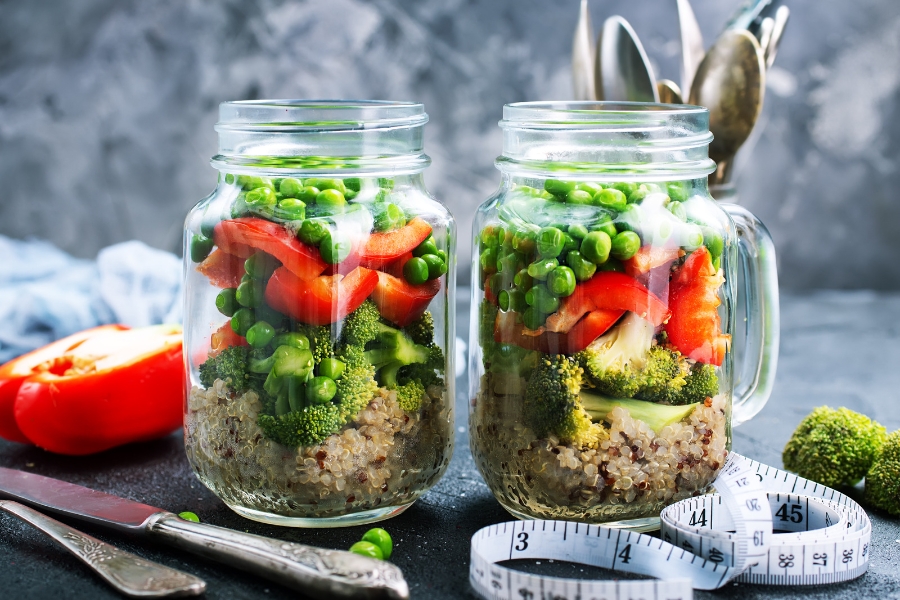
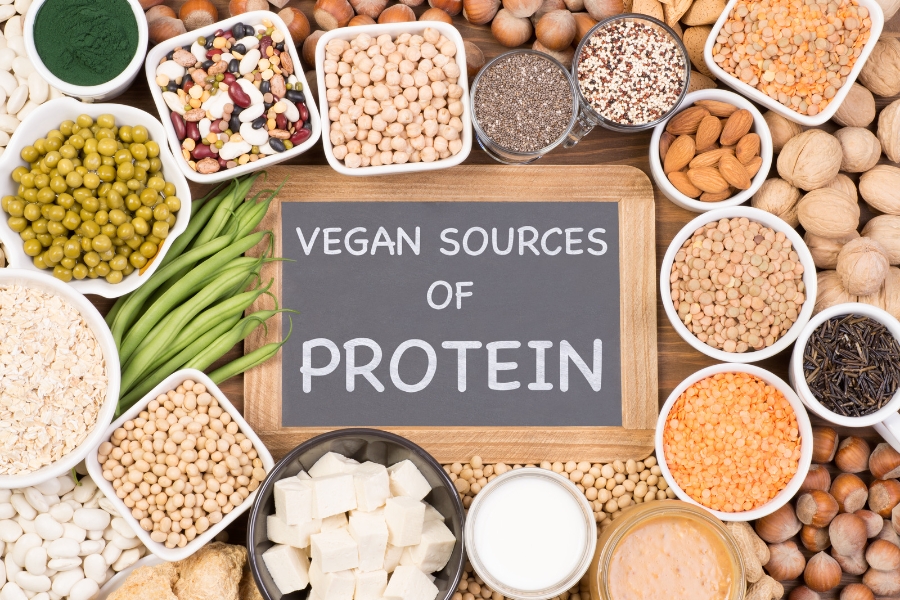

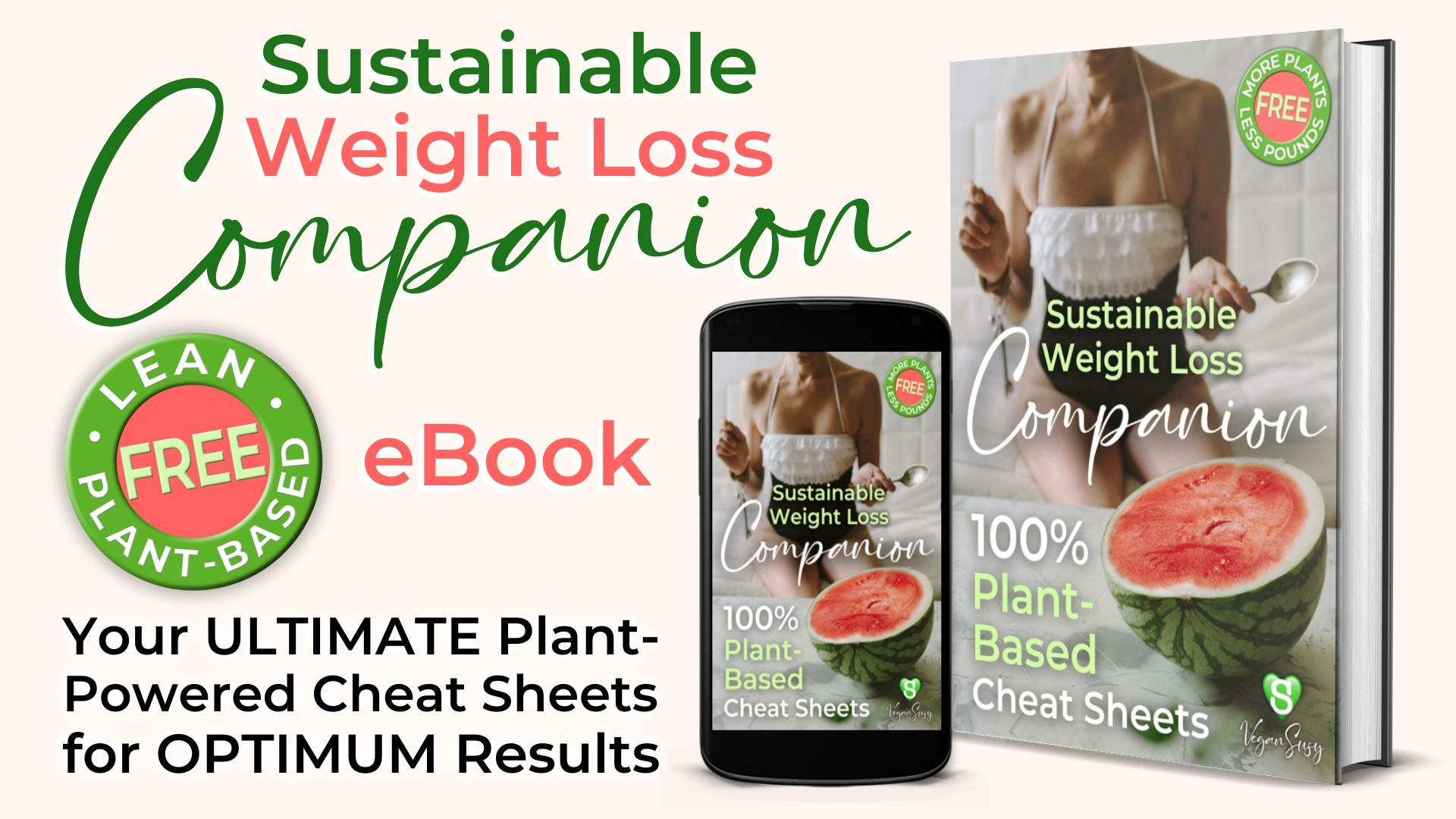





Facebook
Instagram
Youtube
Pinterest